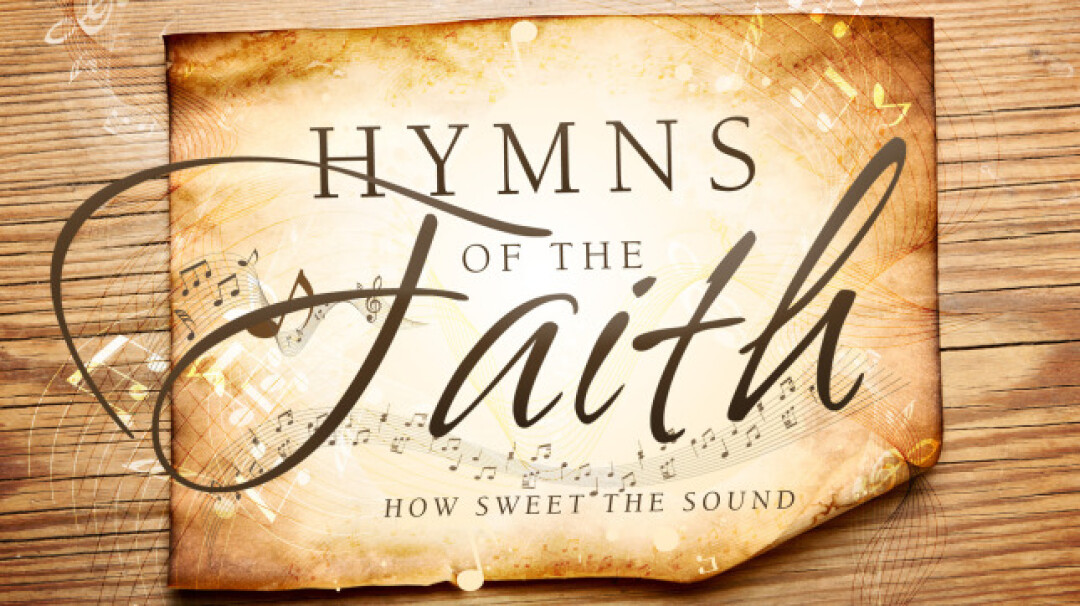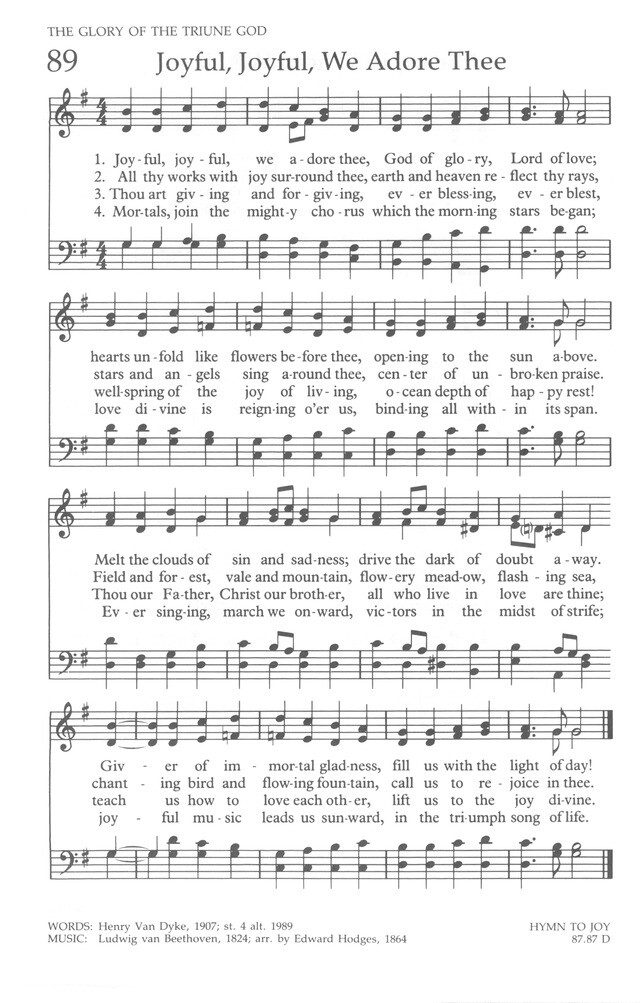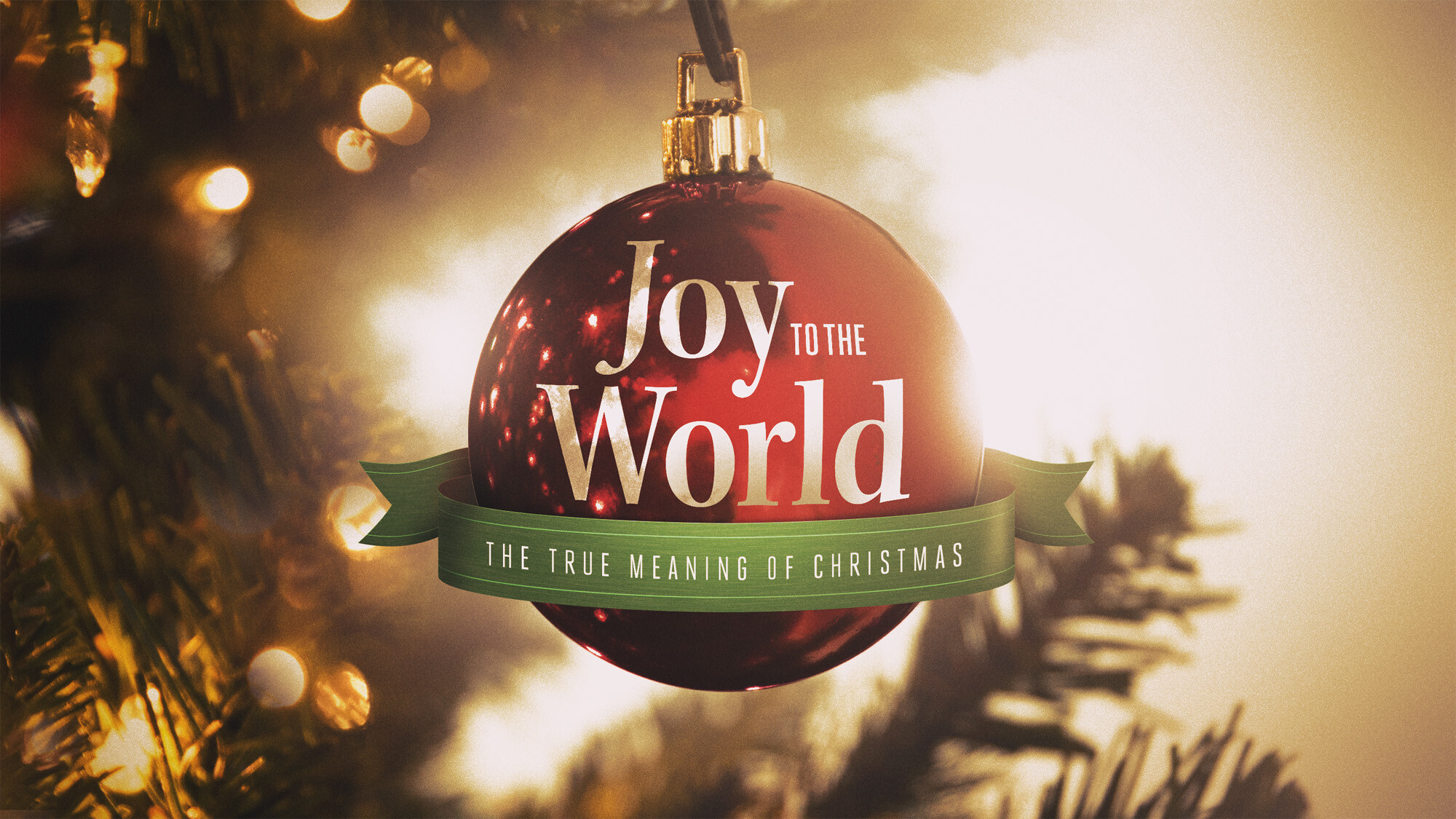

"Joyful, Joyful, We Adore Thee"
Henry Van Dyke
The UM Hymnal, No. 89
This devotion is repeated because Sophia Chu played Beethoven’s Ode to Joy on violin with piano accompaniment by her sister, Olivia, as part of the prelude on January 21, 2024. Unfortunately, the video started after the violin part.
In the heart of 1907, amidst the inspiring beauty of Massachusetts' Berkshire Mountains, something extraordinary stirred in the soul of Henry van Dyke. Known for his spiritual depth as a navy chaplain, pastor, and author, and his distinction as the U.S. Ambassador to Holland and Luxembourg, van Dyke found himself captivated by a moment of divine inspiration.
Gazing upon the majestic mountains, a rush of joy overwhelmed him, leading to the birth of the powerful hymn, "Joyful, Joyful, We Adore Thee." With each word, he painted a vivid picture of adoration for the "God of glory, Lord of love," his heart unfurling "like flowers before Thee, opening to the sun above." In this hymn, van Dyke transformed life's trials into a dance of joy and hope, imploring to "melt the clouds of sin and sadness; drive the dark of doubt away."
His vision of God's grandeur was all-encompassing, celebrating Him as the "Wellspring of the joy of living," our Father, with Christ as our Brother. Van Dyke's invitation was clear: join in the jubilant chorus, march to the triumphant song of life, and let the melody of joy lead us sunward.
The only music that could match the splendor of these words was Ludwig van Beethoven's "Hymn to Joy" from his Ninth Symphony. This pairing created a hymn that resonates with the joyous heartbeat of life itself.[
Fast forward to the 21st century, van Dyke's hymn remains a beacon of hope.
"Joyful, Joyful, We Adore Thee" transcends mere hymnody. It's a celebration of light over darkness, joy over despair, and the unbreakable human spirit. Van Dyke, a minister and English professor, infused his hymn with the Romantic era's poetic themes and a profound Christian hope, creating a timeless masterpiece that continues to uplift and inspire, echoing the eternal dance of joy in the human heart.
Scripture Galatians 5:22-23 NIV
But the fruit of the Spirit is love, joy, peace, forbearance, kindness, goodness, faithfulness, gentleness and self-control. Against such things there is no law.
The entire song is Biblical.
Lyrics are public domain.
[Verse 1]
Joyful, joyful, we adore Thee,
We praise God joyfully (Philippians 1:25, Philippians 4:4, and 1 Peter 1:8)
God of glory, Lord of love;
God possesses glory (Exodus 16:7, Exodus 24:17, Exodus 40:34-35, Leviticus 9:23, 1 Chronicles 29:11, Psalm 3:3, Psalm 8:1, Psalm 19:1-4, Isaiah 6:1-3, Isaiah 40:5, Isaiah 42:8, Isaiah 58:8, Isaiah 60:1, Habakkuk 2:14, John 1:14, John 17:22, Romans 3:23, 2 Corinthians 3:18, 2 Corinthians 4:6, Philippians 4:19, Hebrews 1:1-3, Revelation 21:10-14, and Revelation 21:23) and love (Nehemiah 9:17, Psalm 17:7, Psalm 36:5-7, Psalm 63:3, Psalm 69:16, Psalm 117:2, Isaiah 54:8, John 3:16, John 13:34, John 15:13, Romans 5:6-8, Romans 8:37-39, Galatians 2:20, Ephesians 2:4-5, Ephesians 5:25, Titus 3:4, 1 John 4:8-10, and 1 John 4:16-19 ).
Hearts unfold like flow’rs before Thee,
Op’ning to the sun above.
Melt the clouds of sin and sadness;
Drive the dark of doubt away;
Giver of immortal gladness,
Fill us with the light of day!
In the same way that flowers open up to the gazing sun, so too our hearts bloom to God’s light that drives out the darkness within us (Psalm 107:10-16, Luke 1:79, John 1:1-13, John 12:46, Ephesians 5:8, Colossians 1:13, and 1 Peter 2:9). Clouds that prevent the light from shining forth represents lawbreaking that causes sadness, leading to the second death: eternal separation from God (Matthew 18:7-9, Matthew 25:41, Matthew 25:46, Mark 9:43, Romans 6:23, Jude 1:7, and Revelation 14:11). Instead, we receive eternal life (Mark 10:29-30, John 3:15-16, John 3:36, John 4:14, John 5:24, John 5:39-40, John 6:27, John 6:40, John 10:28, John 17:3, John 20:31, Romans 5:21, Romans 6:22-23, Romans 8:18, 2 Corinthians 4:16-18, Galatians 6:8, 1 Timothy 1:16, 1 Timothy 6:12, 2 Timothy 2:11, Hebrews 5:9, 1 Peter 5:10, 1 John 2:23-27, 1 John 5:10-13, 1 John 5:20, Jude 1:20-21, Revelation 3:5, Revelation 7:16-17, and Revelation 21:3-4).
This is especially clever imagery given that most (if not all) planets cannot survive without light. We too cannot survive without God. John 15:1-11 is an especially relevant passage because Jesus’ statements about dependence on Him was to bring us joy (John 15:11), tying this imagery back to the song’s opening line and central theme.
[Verse 2]
All Thy works with joy surround Thee,
It pleases God to work for and within us (Philippians 2:13). It also pleased the Father to crush Jesus (Isaiah 53:10), not because He is a sadist, but because it brought about salvation to mankind. Jesus is the only way to be saved (John 14:6 and Acts 4:12).
Earth and heav’n reflect Thy rays,
Stars and angels sing around Thee,
That is, creation declares the glory of God (Psalm 19:1-4 and Romans 1:18-20).
This is normally the part where I deduct a point for the “singing” angels as I’ve done in other reviews. However, the inclusion of stars changes the meaning to figurative rather than literal singing. Besides, it’s not specifically referencing Jesus’ birth. Thus, the angels are declaring God’s glory just like the stars.
Center of unbroken praise;
According to Revelation 4:8, the four living creases ceaselessly praise God. It seems reasonable for the stars to do the same, given that they reflect God’s light.
Field and forest, vale and mountain,
Flow’ry meadow, flashing sea,
Chanting bird and flowing fountain
Praising You eternally!
Similar to the list in Psalm 148:1-14, though it doesn’t say they praise Him “forever”, He establishes them forever, and, as I said earlier, they delcare His glory. Thus, they praise Him forever.
[Verse 3]
Thou art giving and forgiving,
Ever blessing, ever blest,
God is our provider (Genesis 2:15-16, Genesis 9:3, Genesis 22:8, Exodus 16:1-36, Psalm 18:2, Psalm 34:10, Psalm 81:10, Psalm 84:11, Psalm 107:9, Proverbs 10:3, Malachi 3:10, Matthew 6:25-30, Matthew 7:7-8, Matthew 21:22, John 14:13-14, John 14:26, John 15:1-10, John 15:16, Romans 8:32, Ephesians 3:20, Philippians 4:19, 2 Corinthians 9:8, and 2 Corinthians 12:9) and the only One who can forgive our sins (Mark 2:7 and Luke 5:21). He is also blessed (Psalm 113:2, Job 1:21, and Daniel 2:19-20).
Wellspring of the joy of living,
Ocean-depth of happy rest!
Most likely references Isaiah 12:3.
Thou our Father, Christ our Brother,
All who love and live are Thine;
The Father and Son are both ours in the sense that we can have a personal relationship with God (Acts 17:27, Romans 8:15, John 15:1-11, and Romans 11:16-24).
Teach us how to love each other,
Lift us to the joy divine.
A prayer that God teaches us to love like He did (1 John 2:6).
Mortals, join the happy chorus,
Which the morning stars began;
Father love is reigning o’er us,
Brother love binds man to man.
Ever singing, march we onward,
Victors in the midst of strife,
Joyful music leads us Sunward
In the triumph song of life.
“Joyful, Joyful, We Adore Thee”, set to the famous "Ode to Joy" melody of the final movement of Ludwig van Beethoven's final symphony, Symphony No. 9, was the opening hymn at Pender's 9:00 am Traditional Service on September 10, 2023. It was sung by Pender's Sanctuary choir, congregation and accompanied on piano by Heidi Jacobs.
“Ode to Joy” was the postlude at Pender's 9:00 am Traditional Service on July 9, 2023, played by Heidi Jacobs on the piano.
On June 20, 2022, a Memorial Concert was held for long-time choir member, Diane Martini. The Pender Sanctuary Choir and The Choral Arts Society of Washington sang several of Diane's favorites.
"The Hymn of Joy" (often called "Joyful, Joyful We Adore Thee" after the first line) is a poem written by Henry van Dyke in 1907 with the intention of musically setting it to the famous "Ode to Joy" melody of the final movement of Ludwig van Beethoven's final symphony, Symphony No. 9.
Former Pender UMC Music Director, Ann Rollins, directed the combined choirs and congregation in singing Joyful, Joyful We Adore Thee with organ accompaniment.
Joyful, joyful, we adore thee,
God of glory, Lord of love;
Hearts unfold like flowers before thee,
Opening to the sun above.
Melt the clouds of sin and sadness,
Drive the dark of doubt away.
Giver of immortal gladness,
Fill us with the light of day.
This joyful ode is one of the best-known hymns in the English language. Henry Van Dyke (1852-1933) was inspired in 1907 by the beauty of the Berkshire mountains where he was serving as a guest preacher at Williams College, Williamstown, Mass.
It has been said that Van Dyke handed the poem to the president of the college, saying: “Here is a hymn for you. Your mountains were my inspiration. It must be sung to the music of Beethoven’s ‘Hymn to Joy.’” The hymn appeared in the 3rd edition of Van Dyke’s Book of Poems (1911).
While this story may be true, Methodist hymnologist Fred Gealy commented on this hymn from a different perspective (as cited by UM Hymnal editor Carlton Young):
“Van Dyke countered [the doom prior to World War I] by speaking a gay cheery all’s-right-with-the-world note which was in complete harmony with the widely held belief in an easy if not inevitable progress. . . . The daintiness of phrase and the lilt of rhythm suggest Elysium or Eden before the Fall.”
The adaptation of Ludwig van Beethoven’s (1770-1827) stirring melody from the final movement of his Ninth Symphony is the perfect companion to this exuberant text. Beethoven never wrote a hymn tune, per se, though a number of texts have been adapted to this melody. Van Dyke’s is by far the most closely associated hymn text with this tune.
The metaphor of light, the antithesis of darkness—a common theme in Romantic poetry—provides the overarching vehicle for expressing joy in stanza one. “Flowers . . . [open] to the sun above.” “Clouds of sin and sadness” disperse. “Dark and doubt” are driven away. The final line of stanza one petitions the “Giver of immortal gladness” to “fill us with the light of day.”
The second stanza paints a vivid picture of God manifest in the beauty of nature, also a common theme of the Romantic era. The third stanza extends to the human creation and the brotherhood of humanity. Since God is the Father of humanity, Christ is our brother.
The belief that ultimately humanity is progressing culminates in the final stanza, “Ever singing, march we onward,/ Victors in the midst of strife.”
Beethoven’s “joyful music” was adapted by British composer Edward Hodges (1796-1867). The United Methodist Hymnal restores Beethoven’s original syncopation that begins the final line of each stanza.
Dr. Young comments on this bold move with a combination of humor and irony: “Its restoration in our hymnal has spawned complaints from those for whom congregational song is devoid of surprises—and resurrection!”
Van Dyke was a Presbyterian minister. Most of his career (1899-1922) was spent as a professor of English literature at Princeton University.
He also served in civil posts, including his appointment to the Netherlands and Luxembourg by Woodrow Wilson, a personal friend, and was a lieutenant-commander in the U.S. Navy Chaplain Corps during World War I. Van Dyke wrote some 25 books and chaired the committee that in 1905 prepared the Book of Common Worship for the Presbyterian Church.
Given Van Dyke’s experience in Europe and service as a military chaplain, it is unlikely that this famous hymn, written during the bleak days before the World War I, was composed with a Pollyanna worldview of denial. Rather this poem, composed by a minister and English professor, reflects the Romantic poetic themes of its day while imbued with a Christian sense of ultimate hope.
Dr. Hawn is professor of sacred music at Perkins School of Theology.
Adapted from https://www.umcdiscipleship.org/resources/history-of-hymns-joyful-joyful-we-adore-thee

On March 9, 2025, the Pender UMC congregation lifted their voices in the closing hymn “Sing with All the Saints in Glory,” set to the beloved tune Ode to Joy ("An die Freude") from the final (fourth) movement of Beethoven's Ninth Symphony.
Accompanied by Heidi Jacobs on piano, this powerful hymn of resurrection and hope was a fitting conclusion to worship. Notably, this hymn was also sung at the 2004 funeral of President Ronald Reagan, echoing its message of eternal life and joyful victory in Christ.


